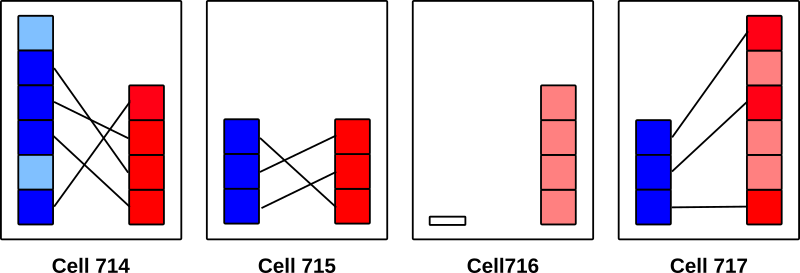RandomPair¶
This page describes the class RandomPair
The class RandomPair performs maximal random pairing between all fertile male and female agents (maximal: as many pairings as possible.
For this it maintains an array of vectors, ech vector containing the ids of the agents in one cell.
This class has no execute() method because all pairings must be done before any other action can use them in its own call to execute().
Note: the agent structures of the population must have a member int iMateIndex

Pairing of agents within cells (blue: males, red: females).¶
- Code:
Attributes:
|
“RandomPair” |
action name |
Public Methods¶
constructor¶
RandomPair(SPopulation<T> *pPop, SCellGrid *pCG, std::string sID, WELL512 **apWELL);
pPopA pointer to the SPopulation object performing this action.
pCGA pointer to the SCellGrid object on which the simulation runs.
sIDAn ID for this action.
apWELLA pointer to an array of WELL512 random number generators (one for each thread)
Allocates the arrays of vectors for the IDs, as well as bool arrays to mark already paired agents and array of locks needed for parallelized filling of the id vectors.
destructor¶
virtual ~WeightedMove();
The destructor deletes all allocated arrays.
initialize¶
virtual int initialize(float fT);
fTCurrent simulation step.
In this method first the id vectors are cleared and then findMates() is called to do the pairing.
isEqual¶
virtual bool isEqual(Action<T> *pAction, bool bStrict);
pActionPointer to an action object to compare with this.
bStrictStrictness of comparisons (ignored here).
pAction is equal to this, if it is a RandomPair object.
Protected Methods¶
findMates¶
int findMates();
This method (called by initialize()) first uses a parallelized loop to fill the id vectors with the IDs of all male and female fertile agents.
Then for each cell as many pairs as possible are selected from the male and female vectors.
It is expected that the agent structures have a field m_iMateIndex, since this is set for each paired agent.